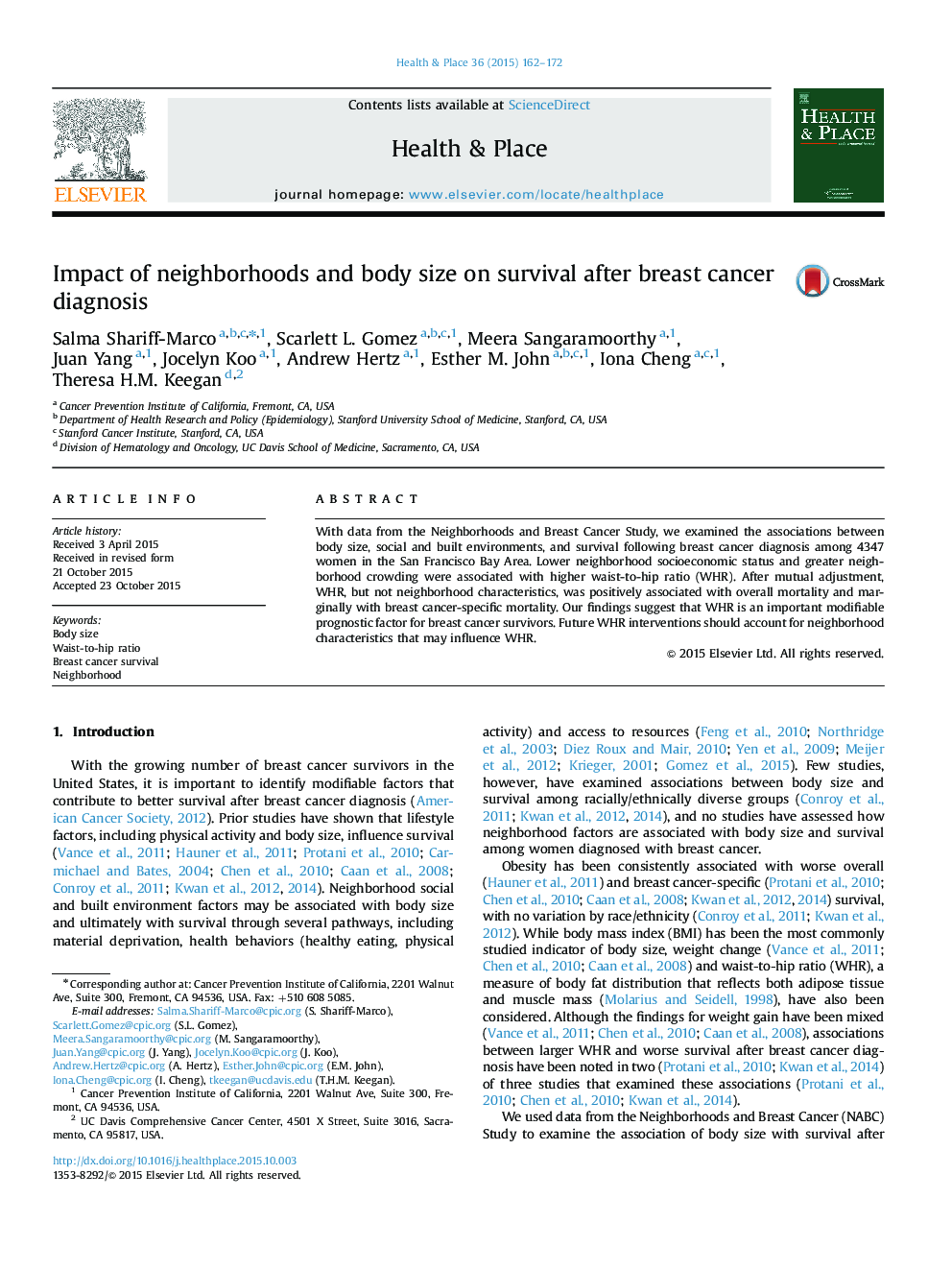| Article ID | Journal | Published Year | Pages | File Type |
|---|---|---|---|---|
| 7457745 | Health & Place | 2015 | 11 Pages |
Abstract
With data from the Neighborhoods and Breast Cancer Study, we examined the associations between body size, social and built environments, and survival following breast cancer diagnosis among 4347 women in the San Francisco Bay Area. Lower neighborhood socioeconomic status and greater neighborhood crowding were associated with higher waist-to-hip ratio (WHR). After mutual adjustment, WHR, but not neighborhood characteristics, was positively associated with overall mortality and marginally with breast cancer-specific mortality. Our findings suggest that WHR is an important modifiable prognostic factor for breast cancer survivors. Future WHR interventions should account for neighborhood characteristics that may influence WHR.
Related Topics
Health Sciences
Medicine and Dentistry
Public Health and Health Policy
Authors
Salma Shariff-Marco, Scarlett L. Gomez, Meera Sangaramoorthy, Juan Yang, Jocelyn Koo, Andrew Hertz, Esther M. John, Iona Cheng, Theresa H.M. Keegan,
